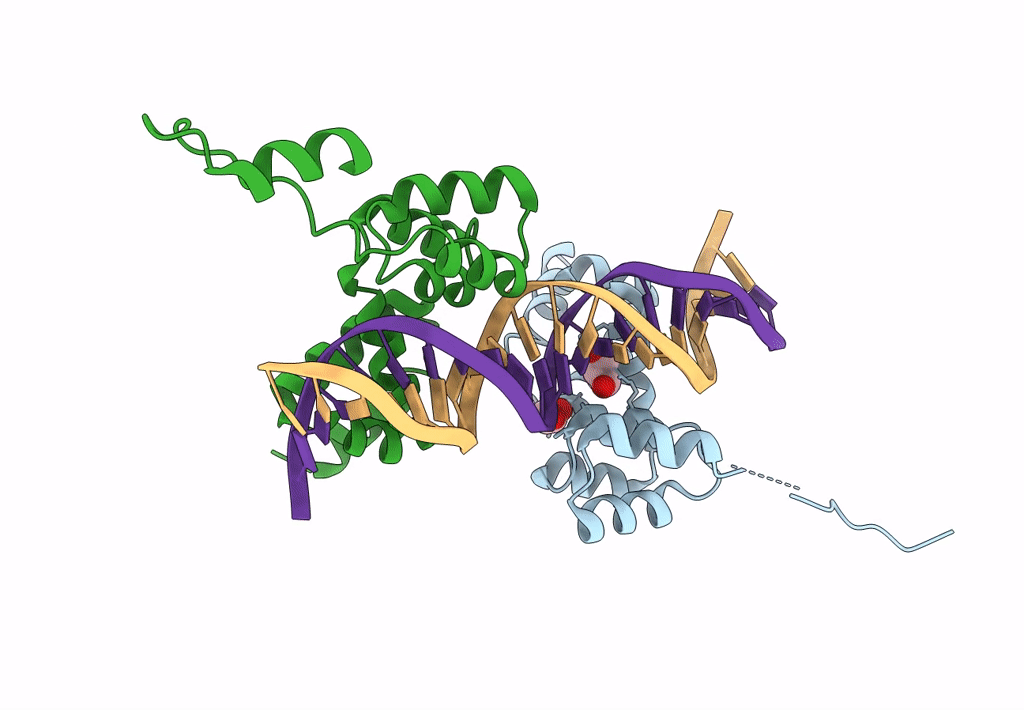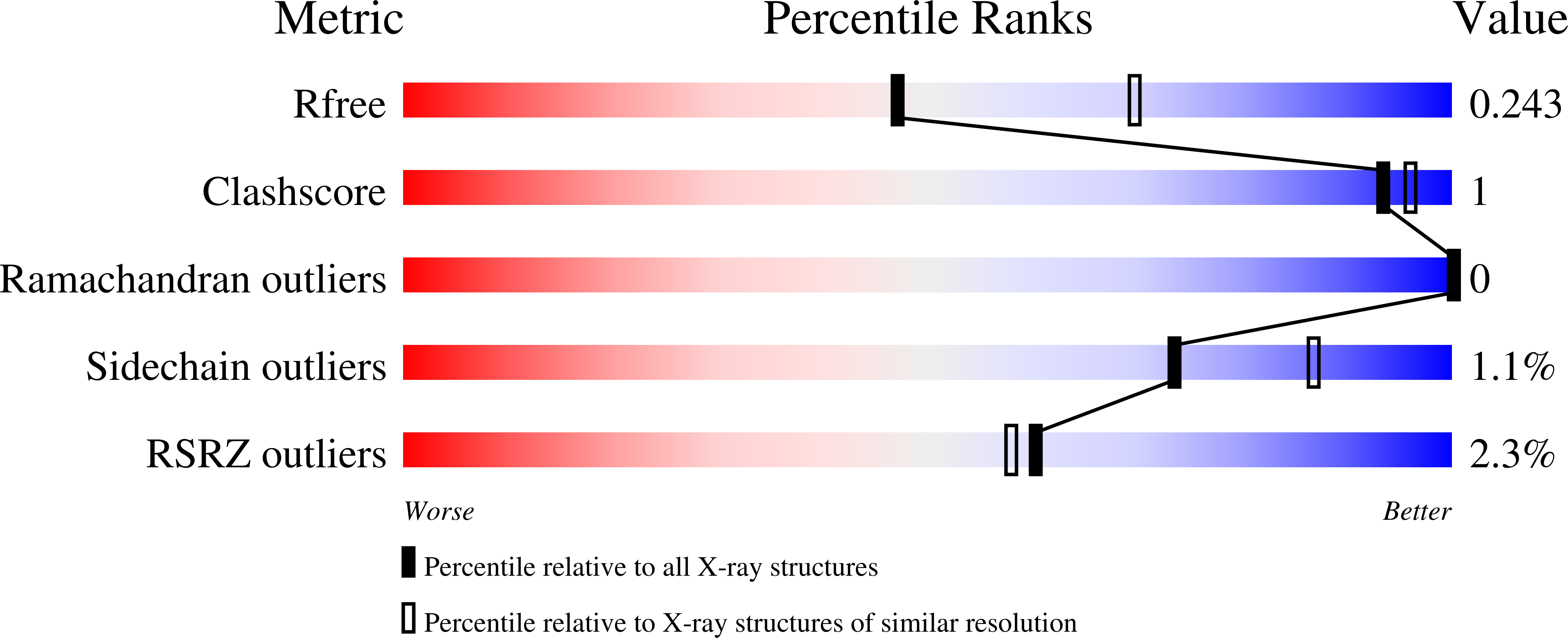
Deposition Date
2019-07-03
Release Date
2020-07-15
Last Version Date
2024-01-24
Entry Detail
PDB ID:
6S6H
Keywords:
Title:
Crystal structure of the DNA binding domain of the chromosome-partitioning protein ParB complexed to the centromeric parS site
Biological Source:
Source Organism:
Caulobacter vibrioides NA1000 (Taxon ID: 565050)
Caulobacter vibrioides (Taxon ID: 155892)
Caulobacter vibrioides (Taxon ID: 155892)
Host Organism:
Method Details:
Experimental Method:
Resolution:
2.40 Å
R-Value Free:
0.23
R-Value Work:
0.21
R-Value Observed:
0.21
Space Group:
C 1 2 1


